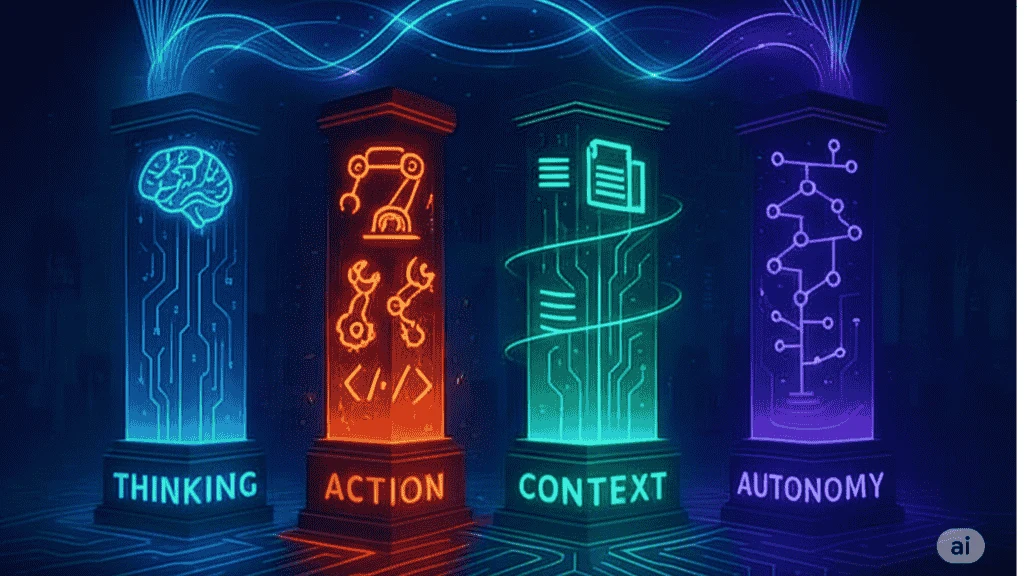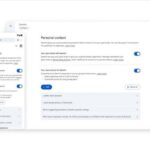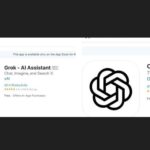
🔥 Agentic AI Is Booming — Don’t Get Left Behind
In 2025, agentic AI is changing how we build software. These are not just chatbots that respond to your prompts. These are systems that set goals, use tools, remember context, and make decisions on their own.
💡 In simple terms: You give an agent a goal. It figures out how to achieve it.
The agentic AI market just crossed $2.3 billion and is growing fast. Experts expect it to reach $28 billion by 2028.
If you’re a developer, entrepreneur, or tech hobbyist, now is the time to start building with these tools.
Table of Contents
🧠 What Is Agentic AI?
Traditional AI: You ask a question, it answers.
Agentic AI: You give it a goal, and it works to complete it.
These agents use memory, logic, and real-world tools like APIs or browsers. They can act, learn, and improve over time.
🏗 The 4 Core Skills of Agentic AI:
- Goal Setting – Agents break tasks into steps and work until the goal is done.
- Tool Use – They use APIs, search engines, databases, and more.
- Memory – They remember past actions and improve from feedback.
- Autonomy – They adapt, make decisions, and even recover from failure.
🚀 Top Agentic AI Frameworks (Tested in 2025)
I’ve tested 20+ frameworks and picked the best ones for real-world use. Here’s what you should consider:
🥇 1. Agno – Best for Beginners and Startups
Why use it:
- Clean and simple code
- Great docs
- Works out-of-the-box
- Free + model/API cost
Use case: Build a working AI agent in 10 minutes
Perfect for: Solo developers, founders, fast MVPs
pythonCopyEditfrom agno import Agent
agent = Agent(
name="TrendTracker",
model="gpt-4",
instructions="Track and summarize trending topics in tech daily"
)
result = agent.run("What’s trending in AI today?")
🏗 2. LangGraph – Best for Complex Systems
Why use it:
- Full control over agent logic
- Built-in debugging tools
- Great for workflows with many steps
Downside: Takes time to learn
Perfect for: Teams, serious production systems
⚡ 3. CrewAI – Best for Fast Multi-Agent Apps
Why use it:
- Build teams of agents with different roles
- Easy to connect tools and APIs
- Large, helpful community
Downside: Debugging can be hard in big projects
Perfect for: Hackathons, client demos, business workflows
🔐 4. PydanticAI – Best for Type Safety
Why use it:
- Protects your project from type errors
- Validates input and output
- Works well with Python apps
Perfect for: Production-grade systems, teams that care about stability
🎭 5. AutoGen – Best for Research and Experiments
Why use it:
- Multi-agent conversations
- Great for testing new ideas
- Backed by Microsoft
Downside: Less control, can spiral in loops
Perfect for: Labs, research projects, chatbots
💼 Real-World Use Cases (Simple Examples)
- E-Commerce Business:
An agent team built with CrewAI automated product pricing, customer support, and marketing. Result? Revenue jumped from $50K to $200K/month. - Content Creation:
A LangGraph setup helped a small team produce 10x more content while cutting their work hours in half. - Price Monitoring Bot:
A solo developer used Agno to track product prices and alert clients. Built in 2 hours, deployed the same day.
🧭 Which Framework Should You Use?🎓 Beginner (0–6 months coding)
✅ Use: Agno or CrewAI
Why: Simple setup, good docs, fast wins
👨💻 Intermediate (6–24 months)
✅ Use: Agno or PydanticAI
Why: Clean APIs, solid safety features
🧠 Advanced (2+ years experience)
✅ Use: LangGraph or AutoGen
Why: More control, best for scaling or research
✅ Step-by-Step: Build Your First Agent in 30 Minutes
Goal: Monitor 3 product prices and alert you on Slack if the price changes by 10% or more
Tool: Agno
Time: 30 minutes setup, auto-runs forever
Steps:
- Install Agno: bashCopyEdit
pip install agno - Write your agent logic in Python
- Schedule it using
cronorschedule - Connect Slack or Telegram for alerts
- Deploy using Docker or Render
💸 Mistakes to Avoid (Learn From Others)
- Don’t forget token limits. Agents can loop and cost you $$$.
- Always set clear goals. No vague instructions.
- Don’t store everything. Manage memory smartly.
- Keep secrets safe. Use
.envfiles or encrypted configs.
🔮 2025 and Beyond: What’s Next in Agentic AI?
- Visual Builders: Drag-and-drop agents will become mainstream
- Multi-modal support: Agents will read images, audio, and text
- OpenAI Swarm & Google Frameworks are launching soon
- Enterprise growth: Big companies are hiring for agent engineers now
📅 Your 30-Day Plan to Become an Agent Builder
Week 1: Build a simple agent for a personal task
Week 2: Add memory, tools, error handling
Week 3: Connect UI or Slack, scale to 2+ agents
Week 4: Deploy your app, write about it, get feedback
🧠 Final Advice
- Start small. Don’t try to build an AGI from day one.
- Learn how to debug. It’s more important than fancy tools.
- Join communities. Help others and ask for help.
- Share your work. Writing about your agent teaches you faster.
- Take action. You don’t need to know everything to start.
Also Read: How I Use Replit AI for Free (with Real Proof and Facts)










